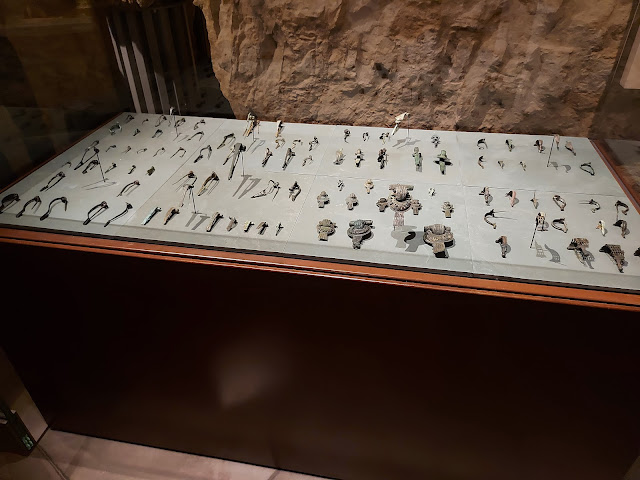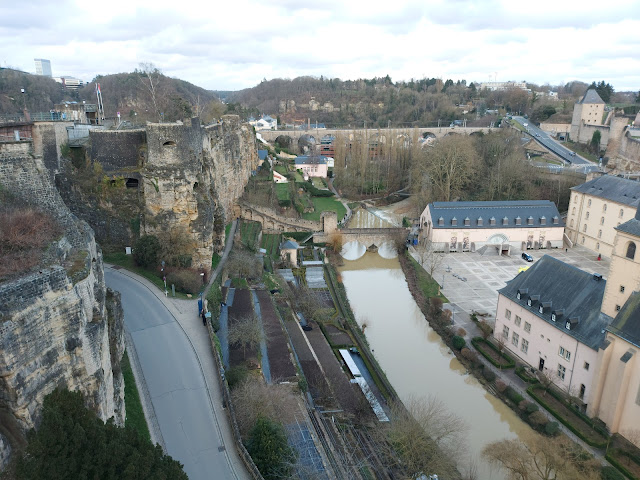 |
| Luxembourg is a small country wedged between Belgium, Germany, and France. |
 |
| Luxembourg Cathedral was built in the 1600s. |
 |
| Some of the Grand Dukes and Duchesses are buried within. |
 |
| The National Art and History Museum of Luxembourg is worth a visit. It is dug a few floors into the ground into the old ruins of the city. |
 |
| A pre-historic creature I wouldn't want to run into. |
 |
| Deep in the sandstone of Luxembourg |
 |
| Celtic fibulae from Titelberg |
 |
| A Roman mask |
 |
| A Roman military marker |
 |
| Nice mosaic! |
 |
| Merovingian fibulae |
 |
| More Merovingian goods |
 |
| The Wild Man, Luxembourg's unfortunate choice of a mascot |
 |
| The Patron Saints of the guilds of Luxembourg |
 |
| A reliquary for pieces of the True Cross from the 1200s. |
 |
| "Bacchus and a Follower" |
 |
| Again, not all 1200s art is created equal. |
 |
| Luxembourg City is known as the Gibraltar of the North due to its highly defensible terrain. |
 |
| The Luxembourg family was one of the three most powerful families in the early Holy Roman Empire, along with the Hapsburgs and Wittlesbachs. |
 |
| When the family line died out, Luxembourg became part of Burgundy, then Hapsburg lands, then France, then the Dutch, and finally became independent in 1890. |
 |
| In 1866 Luxembourg destroyed most of its defenses to prevent a war over it by France and Germany. It remains an imposing sight today, despite this. |
No comments:
Post a Comment